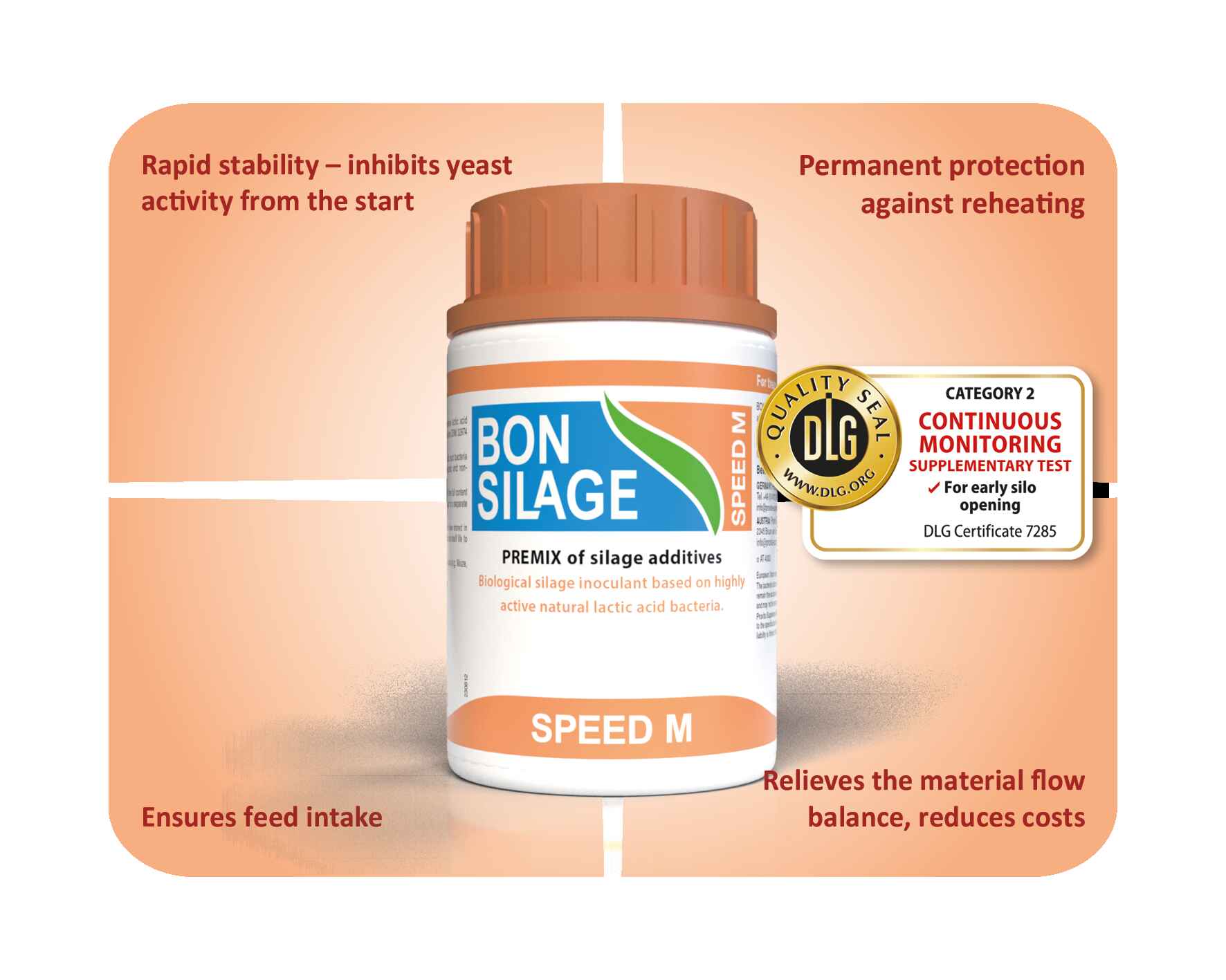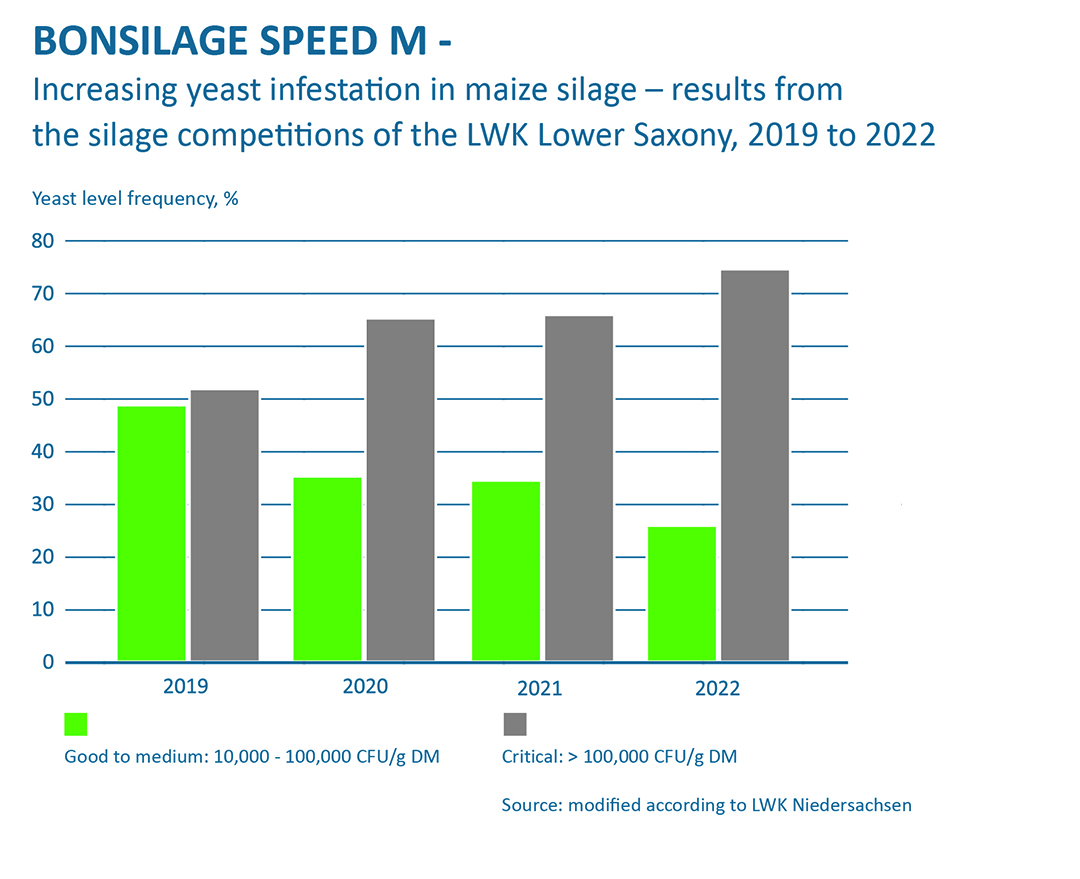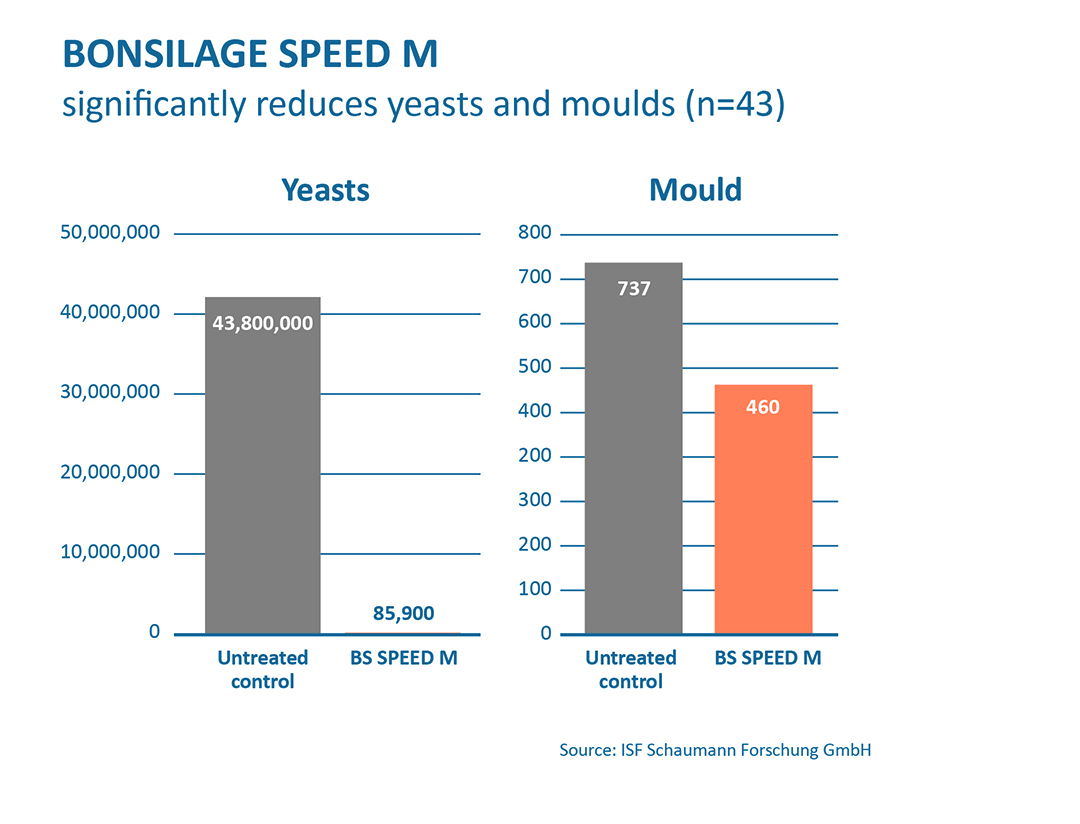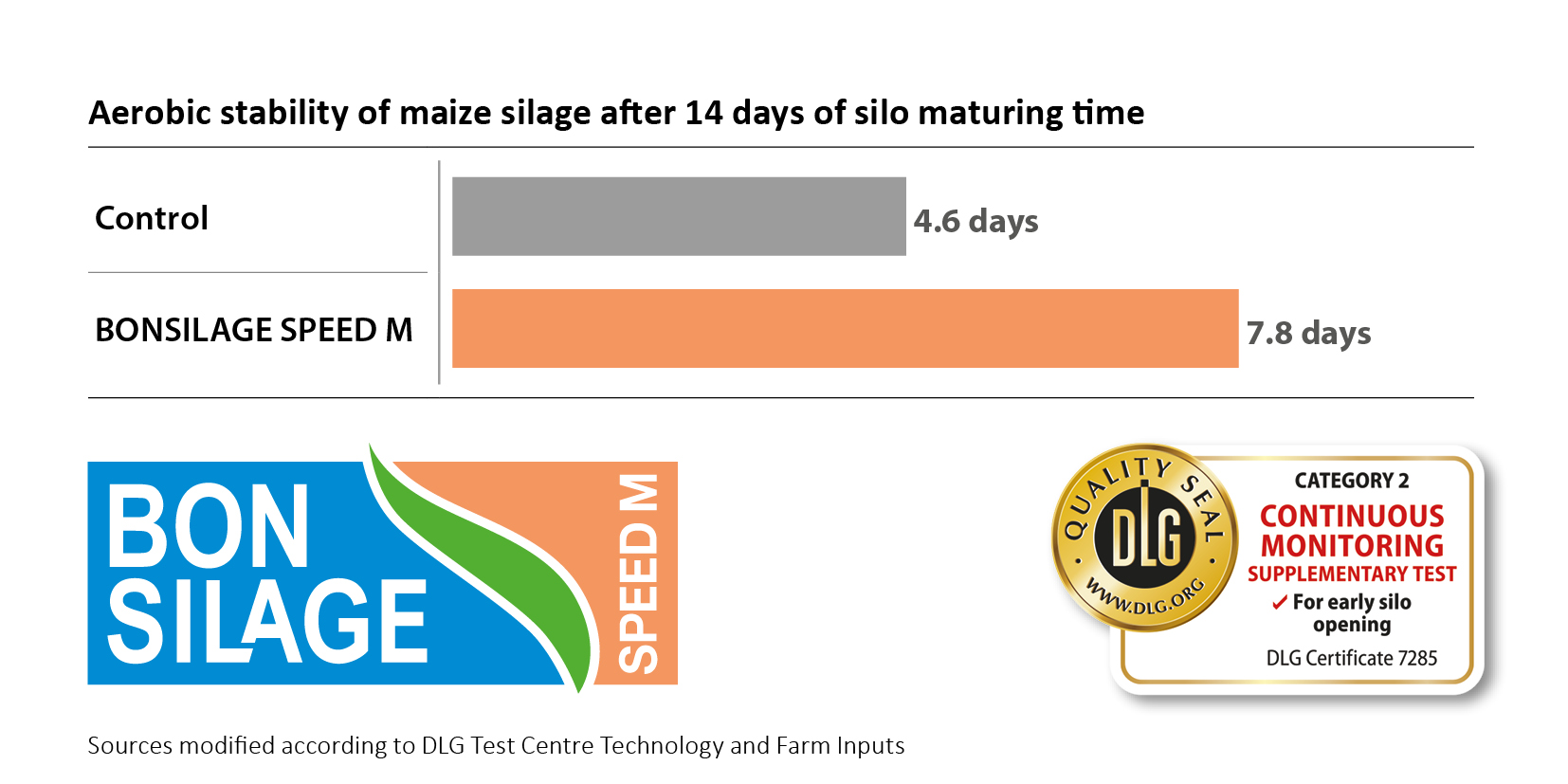
Maize silage - measurably faster ensiling with Bonsilage Speed M

With the silage additive BONSILAGE SPEED M, treated maize silage can be opened after just 14 days. As the silage maturing time increases, larger quantities of propionic acid are formed, the preservative effect of which additionally supports the stability of the opened maize silage. The DLG confirms the effectiveness with its quality seal. For farmers, the use of propionic acid represents an improvement in performance and profitability.
The weather conditions of the past few years have strongly favoured the unchecked growth of yeast and mould fungi, especially in untreated maize silage.
Increasing microbial load due to heat and drought in recent years
Crops damaged by heat stress and drought in recent years have been particularly affected by high levels of yeasts and moulds. If one looks at the evaluations of the silage competitions of the Lower Saxony Chamber of Agriculture, a clear increase in yeast contamination in recent years is obvious (see Figure 1). In 2022, more than 70 % of the participating maize silages show values in the critical range of more than 100,000 CFU/g FM and hence clear signs of spoilage.
BONSILAGE SPEED M inhibits yeasts right from the start
The lactic acid bacterial strain Lactobacillus diolivorans contained exclusively in BONSILAGE SPEED M rapidly forms acetic acid, thus inhibiting the proliferation of yeasts and moulds within the first 14 days of the silo ripening period (see Figure 2). This enables the silo to be opened quickly. In addition, larger amounts of propionic acid are formed as the silo ripening period increases. Propionic acid has a preservative effect and supports the stability of the opened maize silage.
DLG confirms effectiveness with the quality seal
The DLG Test Centre for Technology and Farm Inputs has now awarded these outstanding properties of BONSILAGE SPEED M with a new seal of quality for silage additives. This makes BONSILAGE SPEED M the only silage additive for maize available on the market with effective direction 2 "aerobic stability" and the new effective direction 2+ "additional test for rapid silo opening" (see Fig.3).
Higher feed intake through stable silage
Yeast and mould fungi reduce the hygienic quality of maize silage, reduce the feed value due to energy and nutrient losses and cause reheating. This leads to reduced feed intake with all the associated consequences such as insufficient supply to the cows and reduced performance, which affects the entire following feed year.
Lower costs by relieving the nutrient balance
10-15 % silage losses increase the price of a tonne of maize silage by an average of 4-6 Euro. The costs for treatment with silage additives are a maximum of 1/3 of this amount. All energy losses have to be compensated by buying in feed. This is often associated with higher costs and additionally burdens the nutrient balance of the farm. Therefore, ensure the quality of your maize silage by using BONSILAGE SPEED M.


